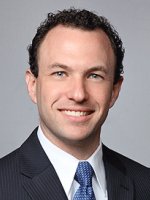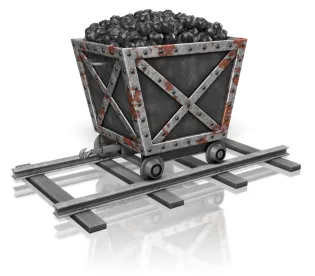The Mine Safety and Health Administration appears to be readying a new policy that could significantly expand and re-interpret mine operator responsibilities in conducting workplace examinations.
On July 9, 2015, MSHA briefly circulated a new program policy letter (PPL) (see pdf) on workplace examinations before removing it from distribution. The agency has said it plans to formally announce the new policy at a “stakeholder meeting” set for July 22, 2015.
If adopted, the new PPL, interpreting 30 CFR §§ 56/57.18002, could change workplace exam practices dramatically and redefine what MSHA considers a violation. The PPL appears to limit who can perform an exam, even while expanding the number of places that must be examined and requiring task training on how to perform exams. It would effectively amend the MSHA Program Policy Manual.
Following are key highlights and analysis of the PPL’s potential implications:
1. Supervisors performing exams is a “best practice”
The PPL appears to suggest that a “competent person,” who is required to perform workplace exams, should be a foreman or supervisor. The current regulations, 30 CFR §§ 56/57.2, define “competent person” as “a person having abilities and experience that fully qualify him to perform the duty to which he is assigned.” MSHA’s Program Policy Manual, until now, said this was “any person who, in the judgment of the operator, is fully qualified to perform the assigned task. MSHA does not require that a competent person be a mine foreman, mine superintendent, or other person associated with mine management.” (Emphasis added.)
The PPL now seems to retreat from that position. It adds that the person should be able to recognize known or predictable hazards. Particularly significant is a recommendation that, while “an experienced non-supervisory miner” could be competent, “[a] best practice is for a foreman or other supervisor to conduct the examination.” Having a supervisor perform the exams of all areas not only imposes time and logistical challenges, it also means that any MSHA allegations that an exam was inadequate or not performed will involve potentially much greater liability. MSHA can charge the operator with the supervisor’s negligence and knowledge or rely on the supervisor’s conduct as a basis for unwarrantable failure allegations and individual civil penalties.
2. Inspections must include areas accessed “infrequently” or only during maintenance
The PPL may be read to require that mine operators conduct exams in more locations than before. It expands the definition of “working place,” to "include[] areas where work is performed on an infrequent basis, such as areas accessed primarily during periods of maintenance or clean-up. All such working places must be examined . . . at least once per shift.” Current regulations define "working place" as “any place in or about a mine where work is being performed.” 30 CFR §§ 56/57.2. In keeping with the Program Policy Manual, MSHA's practice has long been to examine once per shift areas where “persons work during a shift in the mining or milling processes.” It is not clear whether MSHA intends merely to reiterate that areas where work occurs during a shift must be examined or whether it means that even unused areas must be examined.
3. Those who perform exams must receive task training
The PPL adds that being “competent” and adequately performing an exam requires that the competent person has been task-trained in how to perform workplace exams. The new policy says that “[c]onducting a working place examination is a ‘new task’ for which the examiner must be trained’ under Parts 46 and 48.” This new task-training requirement adds workplace exams to Part 46-training plans as a subject to be covered in training.
Even now, MSHA often appears to use the workplace exam standard as an “add-on” violation — arguing that where a particular hazard existed, it reflected a failure to adequately perform a workplace exam, which, if done correctly, should have discovered the violation, in addition to constituting a violation in its own right. Under the new PPL, MSHA may try to add yet another layer to the same violation: failure to task train the examiner. The PPL hints, “If a trained competent person fails to identify multiple safety hazards or if multiple trained competent persons fail to identify similar safety hazards, this may indicate that task training as required under parts 46 and 48 was inadequate or did not occur.”
4. “Best practice” to describe conditions found during exams
The PPL suggests that operators should expand the scope of their workplace exam record-keeping. MSHA often argues that workplace exam records should specify any defects or hazards identified during the exam. However, the current regulation requires only that operators keep “[a] record that such examinations were conducted.” 30 CFR §§ 18002(b).
The new PPL, however, states that “it is a best practice to include a description of such conditions [which may adversely affect safety or health] in the examination record . . . .” The PPL also notes that the new task training obligation brings with it the normal Part 46/48 task- training recordkeeping duties. It expressly states that operators must keep exam records for the prior 12 months and may no longer discard records following a regular MSHA inspection, as the Program Policy Manual previously allowed.
* * *
If the current draft becomes the final PPL, it could be interpreted to impose new compliance burdens and create significant new potential liability. Proper training on conducting exams and having supervisors examine a significant portion of a mine each shift could be time-consuming and expensive. Moreover, the PPL suggests that future MSHA enforcement may focus on a number of broader issues, including:
- an individual’s qualifications to perform exams (with MSHA presuming incompetence or inadequate training if it finds a hazard that an exam allegedly “missed”),
- whether exam records documented hazards that were identified (with MSHA claiming that “blank” records suggest inadequate exams and training),
- elevated enforcement against individuals and operators for supervisors’ workplace exam failures, and
- failures to examine all “working places.”
Mine operators should review the draft PPL, consider its effect on current practices and policies if this policy letter is adopted, and watch for further analysis and guidance following the expected announcement by MSHA.




 />i
/>i


